Acrobatic and Balance
Chinese Pole, Slacklines, Stilts, Unicycle, Tumbling, Walking Globes and more
Acrobatic and Balance Circus Equipment
Let’s face it – there’s something timeless and hypnotic about circus arts. Whether it’s the hush before a highwire act or the gasp when someone flips ten feet into the air, balance-based performances have a way of drawing every eye in the room. But here’s the kicker: every dramatic leap or poised stillness starts with equipment designed to challenge and train the body in ways most of us never even think about.
Whether you’re dreaming of your first class or just want to know what’s behind all that gravity-defying magic, we’re going to break down each essential piece of acrobatic and balance equipment.
Chinese Pole
Chinese poles are vertical steel poles – often wrapped in rubber – that are used for climbing, sliding and holding powerful poses high above the floor. It’s kind of like gymnastics meets fireman training… with some extra flair. The grip can be brutal (think inner thigh bruises and burning forearms), but the payoff? Stunning vertical strength and a real sense of flight.
Performers climb with precision, then pause mid-air like time froze. You’ll see drops, locks, twists – and sometimes, full flips. There’s an elegance to it, but also raw intensity. Beginners usually start with shorter poles, building their endurance and grip strength.
For more information on Chinese pole, check out Aerial Pole 101.
Cyr & German Wheels
Have you ever seen someone roll across the floor in a giant wheel, standing tall as it spins like a coin about to fall? That’s the Cyr Wheel – a single metal hoop that is slightly taller than the person riding it. With balance, momentum and some impressive footwork, performers make it glide like a compass spinning on a dance floor.
Then there’s the German Wheel – think of a hamster wheel with handles. It’s bulkier and more rigid with a full frame that lets you hang, flip or even walk inside while it spins and tilts.
For more information on Cyr wheel or German wheel, check out Cyr and German Wheels 101.
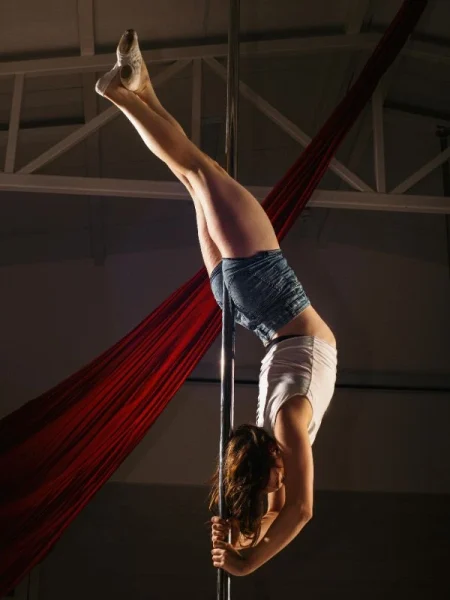


Hand & Foot Balancing
There’s something quietly powerful about balance acts. No flips, no spinning, just stillness… stacked on strength. Hand balancing uses canes, blocks or even just the floor. Athletes press into handstands, shift into planches or hover one-handed like gravity took the day off.
Foot balancing, often paired with contortion, requires incredible control – sometimes while holding props or standing on unstable surfaces. It looks peaceful, but inside? Muscles tremble like tuning strings.
What’s beautiful here is the contrast: intense discipline producing effortless grace. If you’re drawn to slow, strength-based movement, this might be your lane.
Discover more about hand and foot balancing here: Hand & Foot Balancing 101.
Rolla Bolla
Rolla bollas look like a simple toy at first glance: a flat board balanced on a rolling cylinder. But don’t be fooled – it’s a pretty wild ride. One slip in weight and boom – you’re off. That’s kind of the point, though.
Performers stack boards on tubes, then stack again – sometimes up to five levels high. The tension keeps audiences on the edge of their seats… and honestly? It keeps the performer there too.
For beginners, it’s a fast track to understanding micro-movements. Your feet speak to your hips, your core whispers back and somehow your body learns to “listen” better. Balance isn’t just physical – it’s mental too.
Check out more information here: Rolla Bolla 101.
Slacklines
Slacklines aren’t tight like traditional wires. They’re, well… slack. Picture a stretchy band strung between two anchor points, wobbling like jelly on a windy day. No try to walk across it… it’s harder than it looks.
That wobble? It forces constant micro-adjustments. Which makes slacklining a training ground for dynamic balance, sharp focus and frustration tolerance.
While tightwires reward rigidity, slacklines teach flow. There’s a bit of yoga in the mindset – a focus on breathing, soft knees and patient persistence. Check out Slacklines 101 for more information.
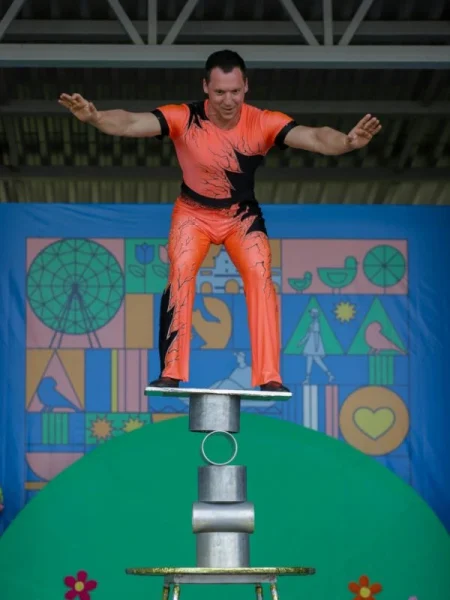
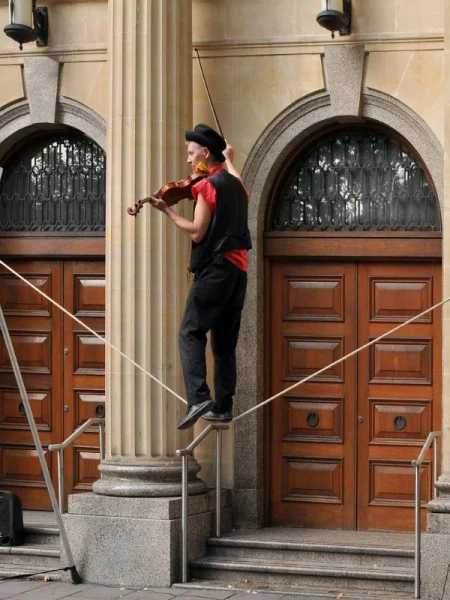
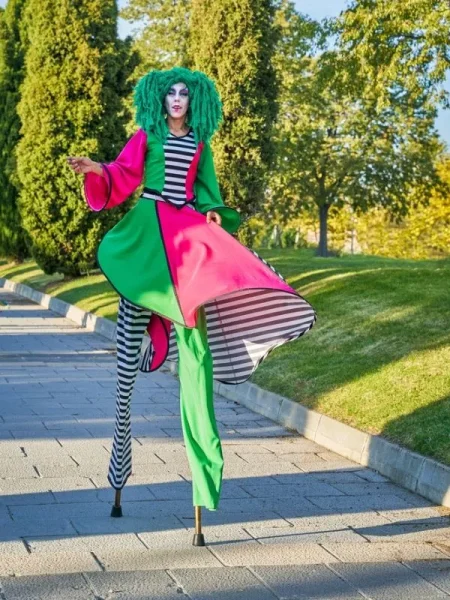
Stilts
Walking on stilts is a balancing act – literally and emotionally. You’re suddenly a few feet taller, and the ground feels… far below. There are peg stilts (rigid sticks strapped to your legs) and drywall-style stilts (with mechanical parts and footplates). Performers sometimes dance, run and even jump with them on.
For festivals and parades, stilts are all about spectacle. But in circus, they become tools of character and storytelling. Have you ever seen a stilt-walker become a towering queen, or a hulking beast? That’s where the artistry kicks in.
Beginners wobble. A lot. But eventually, walking becomes striding and striding becomes soaring. It’s like wearing confidence on your feet.
For more information on stilts, check out our page Stilts 101.
Teeterboard
Imagine a see-saw – but one designed to launch humans into the air. That’s a teeterboard. Two people (or more) bounce back and forth, one jumping down, the other flying up – into flips, twists and landings that somehow don’t end in chaos.
It’s all timing and trust. Your launch depends on someone else’s jump. Miss the mark by half a second? You’re either under-rotating or over-spinning.
It’s risky. But that’s part of the thrill. The teeterboard demands collaboration – it’s not about ego; it’s about sync. That quiet nod between partners before the jump? It’s everything.
Check out Teeterboard 101 for lots more information.
Tightwire
Tightwire (or tightrope) walking is what most people picture when they think of classic circus. A thin steel cable, stretched taut, often several feet – or meters – off the ground. One foot in front of the other, arms out, every step a calculated risk.
But it’s not just about walking. Skilled artists dance, turn, juggle or even carry props while staying poised on that wire. It’s discipline in motion.
For beginners, the wire feels narrow, the ground very far away. But with training, it becomes familiar. The wire teaches you how to fall… and how to stand back up, one careful step at a time. Learn more at Tightwire 101.
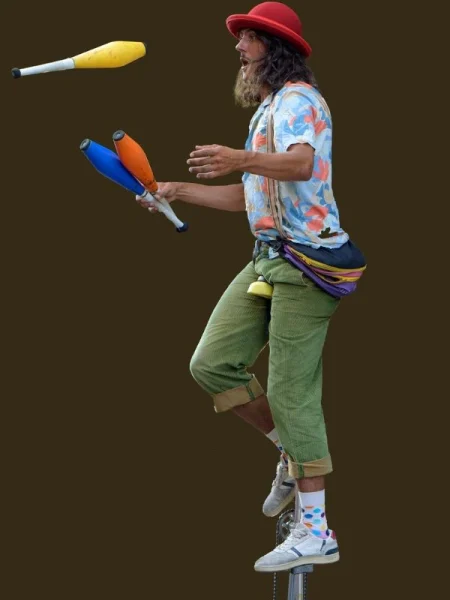
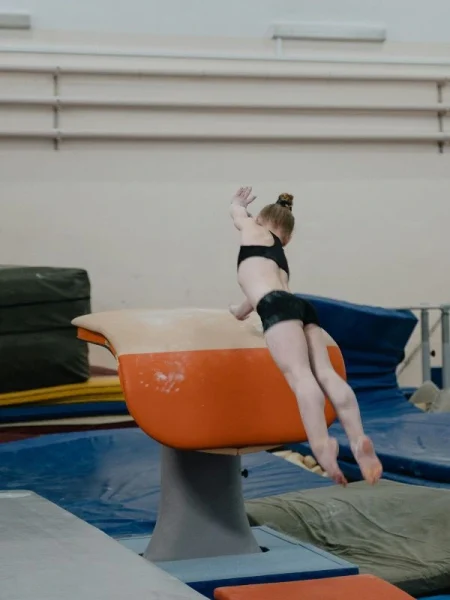
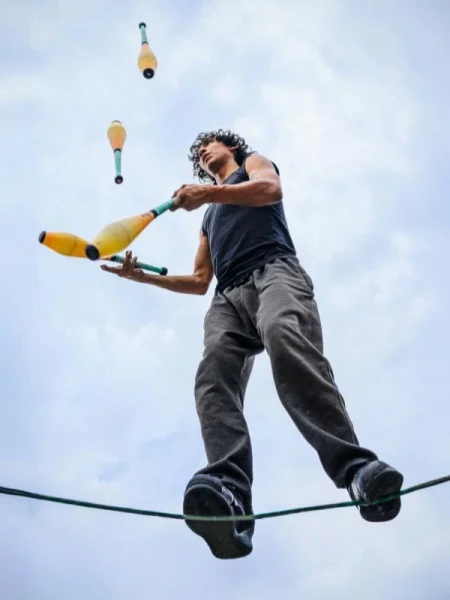
Tumbling Equipment
If you’ve ever watched someone backflip across a stage like a skipping stone across water, they were probably using tumbling equipment. Spring floors, air tracks, mini trampolines – they all add bounce, reduce impact and give performers that exhilarating airtime.
Tumbling builds explosive power and fearless motion. It’s foundational for many circus disciplines. And yes, it’s fun. Like, giddy-child-on-a-trampoline kind of fun.
Beginners usually start with simple drills – rolls, cartwheels, handstands – before moving into the flips and twists. It’s part gymnastics, part flight school. Tumbling Equipment 101 provides lots more information.
Unicycle
The unicycle: one wheel, no handlebars, no brakes. Just balance, momentum and a lot of falling before it clicks. And when it does click? Oh, it feels smooth. Like floating while pedaling.
In circus, unicycles show up in comedy routines, juggling acts and even partner work. Some performers ride giraffe unicycles (yes, that’s a real thing – picture a bike on stilts). Others dance or leap from ramps.
It’s quirky, stubborn and full of charm. If you’ve got patience and a taste for oddball challenges, the unicycle’s your friend. Check out more at Unicycle 101.
Walking Globes
Last but not least, the walking globe – a large, solid ball performers balance and walk on. Think circus yoga meets the playground. The surface is hard, the balance point on it is tiny and every shift of weight matters.
The globe is often used in solo acts or partnered choreography. Some artists dance or juggle while rolling it beneath their feet. Others use it to tell stories, creating fluid movement that mimics floating over the earth.
Beginners start slow. Like, painfully slow. But over time, the globe becomes an extension of the body. You stop thinking about your feet. You start thinking about the rhythm. Learn more at Walking Globe 101.
Balance Is More Than Just Staying Upright
Whether it’s a wire, a wheel or a wobble board, circus balance equipment isn’t just about not falling. It’s about learning your limits – and then pushing them gently. It teaches presence, patience and partnership.
You won’t master everything. No one does. But that’s kind of the beauty of it. Each apparatus offers something different – a challenge, a lesson or a moment of quiet triumph.
And if you’ve ever wanted to feel weightless, to flip the script on gravity or just to walk taller (literally or figuratively)? Well… maybe it’s time to try.
